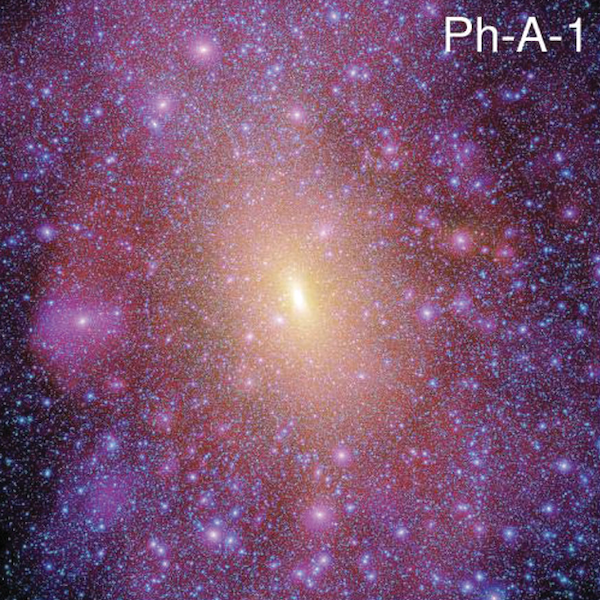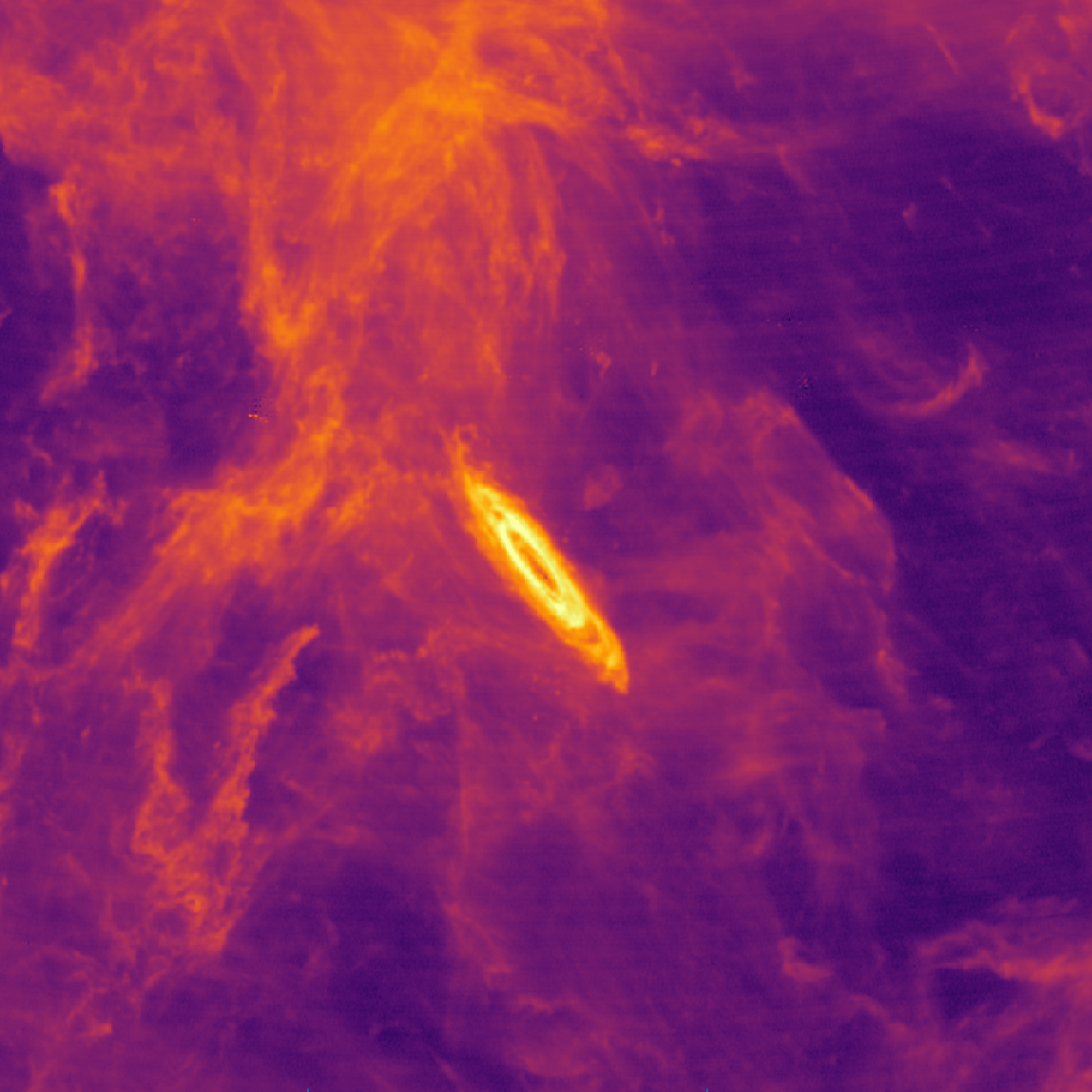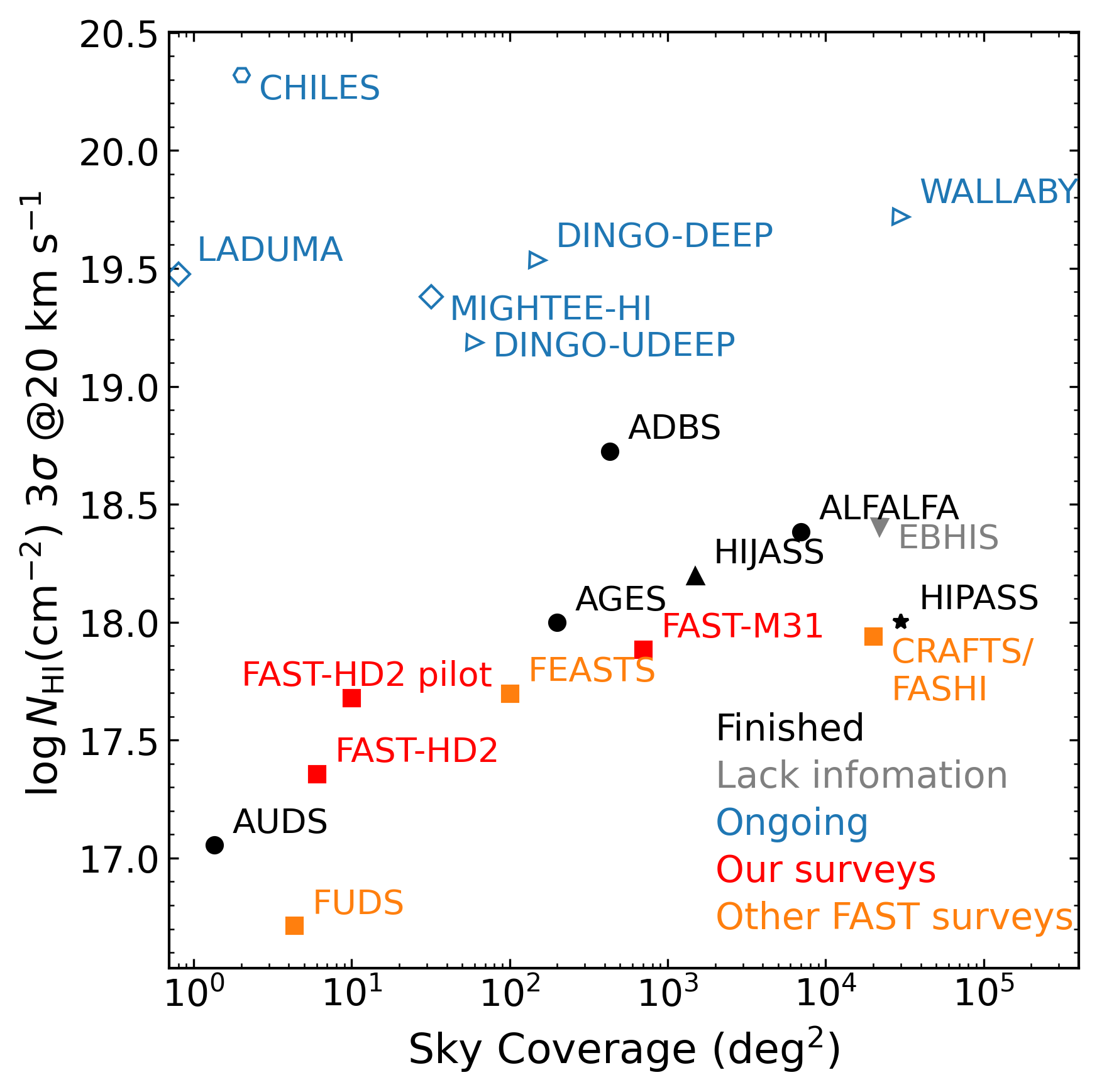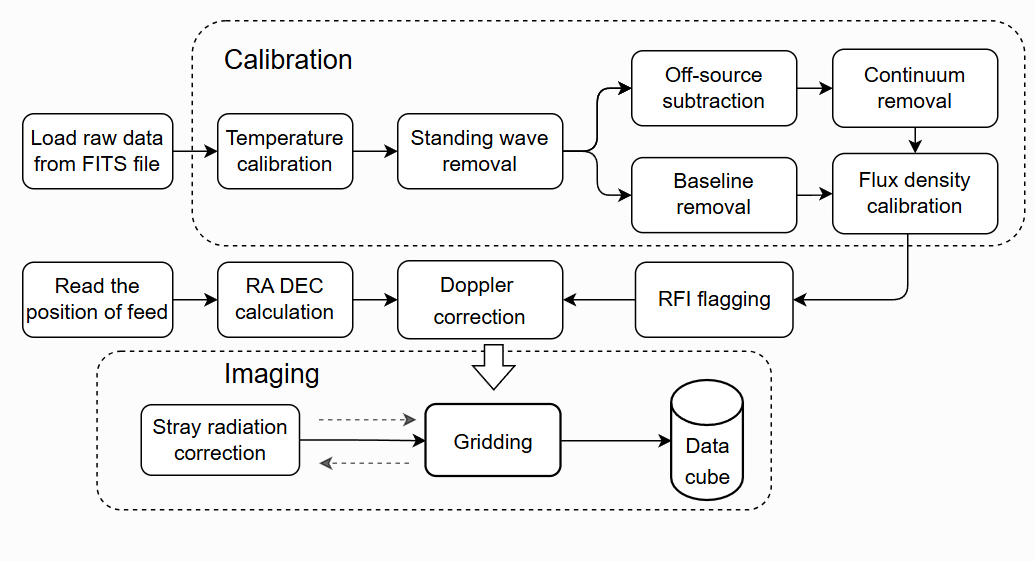Research projects (incomplete list)
Numerical simulations

VVV Simulations: Resolving dark matter haloes over a mass range of 20 orders of magnitude
We performed one of the highest resolution cosmological zoom-in simulations to date, covering the entire range of dark matter halo masses — from Earth-sized haloes to massive galaxy clusters. Assuming dark matter is made of weakly interacting massive particles (WIMPs), our simulation spans 30 orders of magnitude in mass and resolves the internal structure of haloes across this vast range. Remarkably, we find that halo density profiles are universal, and that halo properties such as mass and concentration follow simple, predictable relations. Our results also provide new insights into how dark matter annihilation might contribute to the Universe’s luminosity, with implications that challenge previous estimates.
Publications: Wang et al. Nature 585, 39 (2020); Liu et al. MNRAS 527, 11740 (2024); Zheng et al. MNRAS 528, 7300 (2024); Zheng et al. MNRAS 532, 3151 (2024).
Image credit: Jie Wang et al.

The Phoenix Project: the dark side of rich Galaxy clusters
The Phoenix Project is a suite of high-resolution LCDM “zoom-in” simulations that model the dark matter in rich galaxy clusters to understand their structure and substructure. Nine massive clusters were simulated, each at multiple resolutions, with up to over a billion particles within a cluster’s virial radius. Phoenix provides a comprehensive, baryon-free benchmark for the distribution of cold dark matter in clusters.
Publications: Gao et al. MNRAS 425, 2169 (2012); Cooper et al. MNRAS 451, 2703 (2015); Rong et al. MNRAS 470, 4231 (2017); Chen et al. MNRAS 533, 1197 (2024).
Image credit: Liang Gao et al.

PHoToNs: A parallel heterogeneous and threads oriented code for cosmological N-body simulation
We developed PHoToNs, a new cosmological simulation code designed for next-generation supercomputers. It combines multiple gravity calculation methods to achieve both high accuracy and high efficiency, and is optimized for heterogeneous HPC systems. PHoToNs scales well to massive simulations, achieving excellent performance on modern architectures, and its results agree closely with the widely used Gadget-2 code. This makes PHoToNs a powerful tool for exploring the Universe with large cosmological simulations.
Publications: Wang et al. RAA 18, 062 (2018); Wang et al. RAA 21, 281 (2021); Wang et al. MNRAS 517, 6004 (2022).
Image credit: Ming Li
Galaxy formation

Dwarf galaxies: Small systems, big insights
Dwarf galaxies are the most abundant galaxies in the Universe. Typically dominated by dark matter, they serve as natural laboratories for testing dark matter physics and galaxy formation. Their remarkable diversity (e.g. morphologies, properties) and their central role in small-scale challenges to the LCDM model (the missing satellites, too-big-to-fail, core-cusp, and planes-of-satellites problems) make them a compelling focus of modern cosmology.
Over the past few years, we have combined semi-analytic models (SAMs), cosmological hydrodynamical simulations, and observations to investigate two "odd" dwarf populations: ultra-diffuse galaxies and dark-matter-deficient galaxies.
Ultra-diffuse galaxies (UDGs): Recently identified as a large population of low-surface-brightness systems, UDGs have stellar effective radii comparable to the Milky Way's but central surface brightness typical of dwarfs. Their origin remains debated. Using SAMs and hydro simulations, we find that UDGs preferentially inhabit higher-spin dark matter haloes, and that tidal interactions can also shape a subset of satellite UDGs.
Dark-matter-deficient galaxies (DMDGs): These are dwarfs whose mass within the effective radius appears to be dominated by baryons, contrary to expectations for systems of their mass. In the EAGLE simulations, we show that DMDGs can arise in dense environments through tidal stripping and disruption. Observationally, we have identified 19 DMDG candidates -- remarkably, 14 reside in isolated environments. If confirmed, these field DMDGs would present a significant challenge to standard formation scenarios and could point to new dark matter physics.
Publications: Rong et al. MNRAS 470, 4231 (2017); Liao et al. MNRAS 490, 5182 (2019); Jing et al. MNRAS 488, 3298 (2019); Guo et al. Nature Astronomy 4, 246 (2020); Hu et al. ApJL 947, L9 (2023).
Image credit: Hui-Jie Hu

GABE: Galaxy Assembly with Binary Evolution
We developed a new semi-analytic galaxy formation model: Galaxy Assembly with Binary Evolution (GABE). For the first time, we introduce binary evolution into semi-analytic models of galaxy formation by using the Yunnan-II stellar population synthesis model, which includes various binary interactions. When implementing our galaxy formation model onto the merger trees extracted from the Millennium simulation, it can reproduce a large body of observational results. We aim to provide an unified framework to study binary-related astrophysical phenomenon in the cosmological context. Till now, GABE has been used to study the formation and evolution of kilonovae (NS-NS, NS-BH mergers), binary-induced UV-upturn phenomenon in early-type galaxies, and gravitational wave sigals of merging double degeneracies and super-massive black holes. This is a tool under development. More detailed binary evolution and super-massive black hole evolution models will be incorporated in the near future.
Publications: Jiang et al. RAA 19, 151 (2019); Wang et al. PRD 100, 043003 (2019); Jiang et al. MNRAS 498, 926 (2020); Chen et al. ApJ 973, 159 (2024); Li et al. MNRAS 527, 5616 (2024); Jiang et al. MNRAS 540, 3770 (2025).
Image credit: Zhen Jiang et al.
HI Science

FAST-M31: Deep HI Mapping in the M31 Halo
The Five-hundred-meter Aperture Spherical radio Telescope (FAST) provides unprecedented sensitivity for mapping neutral hydrogen (HI) in nearby galaxies.
We have conducted deep HI observations of the halo of the Andromeda Galaxy (M31) to study its gaseous environment, gas in satellites, interactions with M33 and Milky Way, and high-velocity clouds.
Furthermore, we have employed these deep observations to investigate peculiar structures including the Davies' cloud and [OIII] Object, using kinematic and morphological analysis to constrain their formation mechanisms.
The background galaxies detected in these deep HI fields enable us to construct a large sample in the low redshift, providing new insights into the distribution and properties of cold gas in the local universe.
We are also collaborating with multi-wavelength surveys to explore the connection between HI gas and supernova remnants.
Collectively, these research initiatives significantly advance our understanding of gas accretion processes and baryonic matter cycling in galaxy evolution.
Publications: Liu et al. RAA 24, 085009 (2024); Liang et al. RAA 25, 095001 (2025); Liang et al. AJ 170, 253 (2025).
Image credit: FAST-M31 survey

FAST-HD2: Hundred-deg² HI Deep Survey combined with DESI
The FAST Hundred-deg² HI Deep Survey represents a major advancement in neutral hydrogen astronomy, utilizing the unparalleled sensitivity of FAST to probe neutral gas across cosmic time. This survey aims to cover approximately 100 square degrees with exceptional depth and spectral resolution, with target fields strategically overlapping with major optical surveys including DESI, SDSS, and HSC-SSP to enable comprehensive multi-wavelength studies.
In redshift less than 0.1, we will produce an extragalactic HI source catalog like ALFALFA and xGASS, facilitating the study of HI properties in a wide range of environments.
And at the high redshift of 0.3, the survey employs HI intensity mapping techniques to trace neutral hydrogen distribution in the cosmic web at higher redshifts, measuring the evolution of cosmic HI density.
This dual approach will substantially expand the sample of dark galaxies while pioneering the study of high-redshift HI distribution across large-scale structures. These complementary observations will provide crucial constraints on gas accretion processes, galaxy evolution, and the role of neutral hydrogen in structuring the universe from cosmic dawn to the present era.
Publications: Xu et al. 2025, in prep; Liu et al. , in prep ...
Image credit: Chen Xu

HiFAST: An HI Data Calibration and Imaging Pipeline for FAST
HiFAST is a dedicated pipeline for FAST HI data calibration and imaging, to reduce the raw spectra into spectral cubes.
It is a modular and flexible pipeline, comprising modules for noise diode calibration, baseline fitting, standing-wave removal using an FFT-based method, flux density calibration, Doppler correction, stray radiation correction, and gridding to produce data cubes.
It is widely used in many studies based on FAST HI observations, including the FASHI survey and single extended sources.
Website: https://hifast.readthedocs.io/en/v1.3/
Publications: Jing et al. SCPMA 67, 259514 (2024); Liu et al. RAA 24, 085009 (2024); Xu et al. RAA 25, 015011 (2025); Chen et al. submitted to RAA.
Image credit: HiFAST documentation
